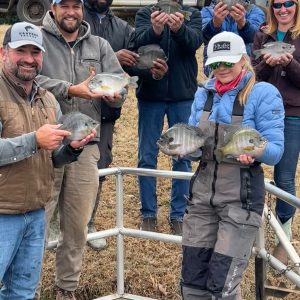It takes an organized trapping program to control problem predators. If you are considering trapping as a solution, one of the most common and effective sets is a dirt hole set.

The Basic Dirt Hole Set
Before making the first set, study your land for predator pathways. These frequently follow roads or trails that are already in place. Animals are no different than humans; they will use the easiest way to get where they are going. These travel ways can be spotted by tracks in wet dirt or snow, scratch marks and scat from the animal. A dog can be a big help in finding where wild critters go. Wherever a domestic canine urinates, it probably means that another animal urinated there first.
Good set locations include trail and road intersections, openings into fields, heavily used trails under fences, or any place where there is a transition in habitat.
A dirt hole set is simple to make, but requires some attention to detail to do well. The key to a successful “leg hold set” is proper bedding of the trap to prevent any rocking or movement, the trap should not move at all, no matter where a paw is placed.
The trap should be placed about five inches in front of the backing for your set. Backing can be a tree, rock, log, hay bale or clump of weeds, anything that will stop a trap-shy animal from sneaking in from the rear.
Making the Set
Step One: Digging a hole for the trap
Dig a hole a bit larger than your set trap and deep enough so that the trap can be covered with loose dirt. Before placing the trap, either pound a stake through the trap chain into the ground, or wire the trap chain to a nearby tree or heavy branch. You obviously don’t want the animal to escape with your trap.
Step Two: Placing the trap in the hole
Put the trap in the hole – try to wiggle the trap from all directions to be sure it won’t move if the critter steps anywhere other than the pan. Press dirt into the space between the trap and the edge of the hole.
Step Three: Hiding the trap
Sift dirt over the trap until it’s covered. Finally, use local surface dirt, short pieces of grass or pine needles to blend the trap bed with the ground nearby.
Just as different houses appeal to different owners, the same is true about sets. A bobcat will cover a quarter mile to explore a chicken wing or bit of tinsel swinging over a trap, while a fox will probably make a mad dash away from that cat set since foxes are all about stealth and protection. Coyotes have a different dynamic; it’s less about curiosity and more about their stomachs and thievery.
Step Four: Lure holes
Dig one or two lure holes that are offset to the left or the right of the trap since an animal’s paws will be several inches to the left or right of their nose. The bigger and deeper the lure hole, the bigger animal it will draw.






